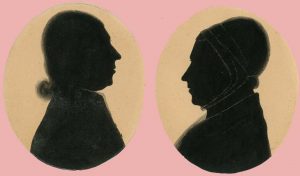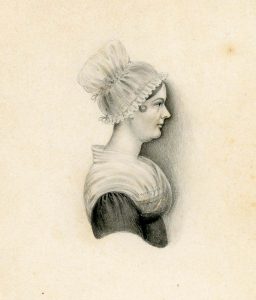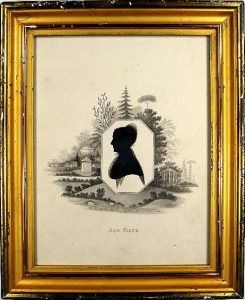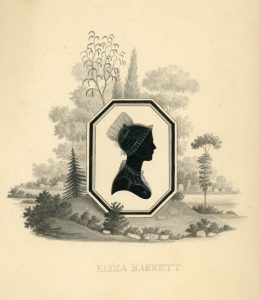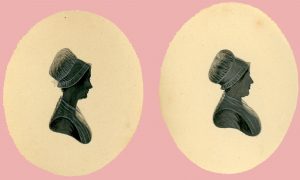Thomas Pole – Doctor, Preacher & Artist
Primarily remembered as a physician and a Quaker minister, Thomas Pole was also a talented artist and draughtsman who enjoyed sketching local buildings and painting silhouettes of his friends and family.
Thomas Pole’s ancestors came from Wiveliscombe in Somerset. His father, John Pole (1705-1755), was a tailor but financial difficulties prompted him to emigrate to Philadelphia where he established a new business and in time married Rachel Smith.
Born in 1753, Thomas was their youngest child. His father died when he was just one year old, his mother when he was six. As a child he made small boxes out of wood and aspired to be a carpenter. At the age of nineteen though he was drawn towards Quakerism and became an itinerant preacher. In 1775 he travelled to England to meet his father’s family. There he continued to preach but he also apprenticed himself to a fellow Friend Joseph Rickman, a Maidenhead apothecary and surgeon and so began to study and practice medicine.
By 1781 Thomas Pole was settled in London where he was to spend the next twenty years practising obstetrics and lecturing on midwifery. In 1784 he married Elizabeth Barrett of Cheltenham, ‘a young woman of serious character’, and the couple went on to have five children.
Failing health and overwork eventually drove Thomas to relocate his family to Bristol in 1802. There he became a prominent member of the Quaker community, actively promoting adult education and continuing to lecture on medicine.
His Silhouettes
Thomas Pole was a talented draughtsman and always had his drawing materials to hand using them not only to illustrate his lectures but also to draw portraits of family and personal friends as well as architectural sketches. His preferred medium of portraiture was the silhouette: its plainness suited the Quaker rejection of personal vanity. These drawings were held in albums and rarely dispersed outside the family.
Pole favoured bust-length silhouettes which he painted sometimes in plain black and sometimes with transparency and the addition of Chinese white for costume details. Unless intended for a locket, they were usually finished with a watercolour wash border. His most attractive works are the profiles that he placed within octagonal borders surrounded by finely painted foliage in monotint with classical urns, follies, houses and churches in the background. These were not intended as obituary portraits as is sometimes suggested.
His profile of Eliza Barrett (see below) is a particularly fine and touching example. Eliza was Thomas’s niece, the daughter of Edmund Barrett of Cheltenham, a corn merchant. Painted in 1822, she is shown wearing a Quaker bonnet, the background with a river and village scene. Tragically Eliza died in 1835 as a result of severe burns.
Later Life
The last few years of Thomas’s life were not easy ones. His wife died in 1823 having suffered painfully with cancer for some time. He also endured financial difficulties after bailing out his youngest son. His own health was poor too: he had a stroke in 1821. His final years were lived quietly in meditation; he passed away in his chair in September 1829 at the age of 75.
© Wigs on the Green
